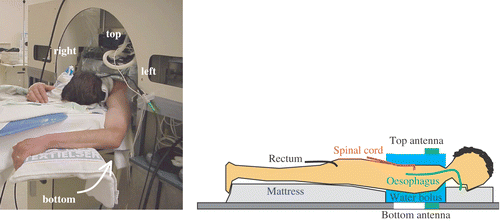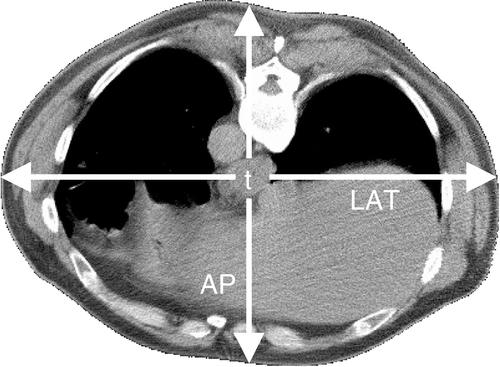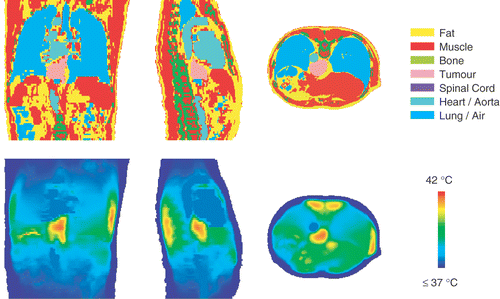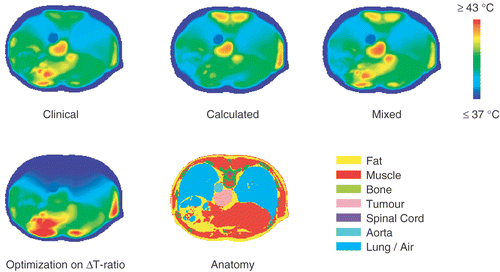Figures & data
Table I. Values of the dielectric and thermal properties used in the simulations, for different tissue types at 70 MHz and under hyperthermia conditions; conductivity (σ(S m−1)), relative permittivity (εr (−)), density (ρ (kg m−3)), specific heat capacity (c (J kg−1°C−1)), thermal conductivity (k (W m−1°C−1)) and perfusion (Wb (kg m−3 s−1)).
Figure 1. Patient set up in the 70 MHz AMC-4 phased array locoregional hyperthermia system during treatment (left) and a schematic representation of the applied thermometry (right).

Figure 2. The power pulse scheme for the ΔT-measurements applied at the start of each treatment. The units along the vertical axes are arbitrary (a.u.).

Figure 3. Example of the patient's dorsoventral (AP) and lateral (LAT) diameters, determined from the CT scan in treatment position. The location of the tumour is marked as ‘t’.

Table II. Example of calculated, clinical and mixed power ratios (P) and phase settings (Φ) for patient 12, normalized to the top antenna. The top antenna is the reference, i.e. phase 0°.
Figure 4. Transversal, coronal and sagittal slices of the numerically optimized temperature distribution and the corresponding anatomy of patient 12. The tumour temperature was maximized, taking constraints of 42°C to normal tissue and 40°C to the spinal cord into account.

Table III. Results of ΔT-measurements performed with calculated, clinical and mixed settings, averaged over 48 treatments (mean ± SEM) in 16 patients.
Table IV. The clinically measured (M) and computed (C) ratios ΔToes/ΔTcord for patient 12, resulting from the calculated, clinical and mixed settings. The simulated steady state tumour temperatures T10, T50 and T90 are also listed, together with the maximum temperature in normal tissue (Tmax) and the temperature in the back musculature, near the spinal cord (Tcord).
Figure 5. Transversal slices of the steady state temperature distribution of patient 12 resulting from the calculated, clinical and mixed settings as well as the steady state temperature distribution resulting from the settings prescribed by optimization on ΔT-ratio. In all cases, the total power was normalized to the amount applied in the clinic (800 W).
